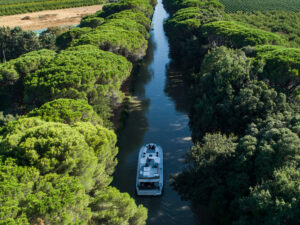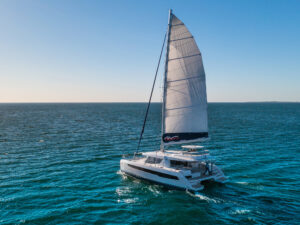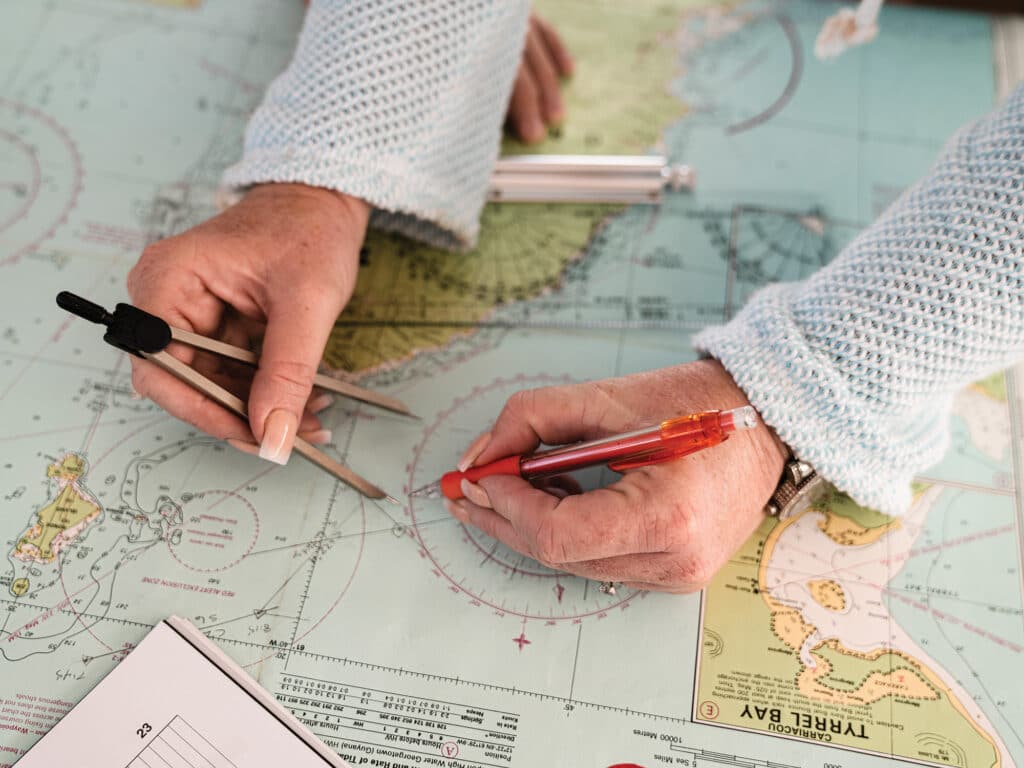
Aaron Maynard owns an electric-bike shop in Myrtle Beach, South Carolina, where a customer came in one day seeking a folding bike.
“I asked him specifically why he wanted a folding bike because we sell many models,” Maynard says. “He said that he and his wife were going to sell their house and their belongings, and move onto a sailboat for a few years. After he left, I looked up ‘45-foot sailboat’ online. What I saw totally enthralled me. I began researching boats nonstop. I ordered a catalog from The Moorings and read it from cover to cover. In the back of the catalog, there was information about learning to sail.”
The next day, Maynard called Offshore Sailing School and signed up himself and his wife, Michele, for a certification class. They had never set foot on a sailboat when they attended the Offshore Sailing School at the South Seas Island Resort on Captiva Island, Florida, in 2018, joining the increasingly large ranks of people who are taking certification courses either to learn the basics or to gain advanced skills.
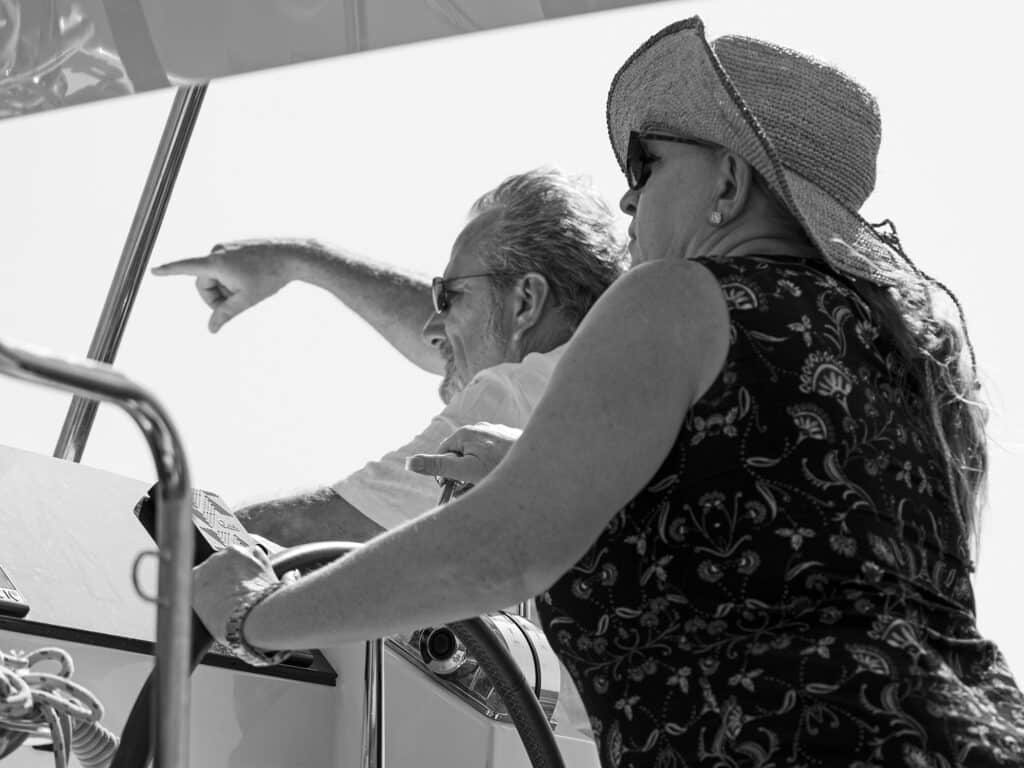
And make no mistake: It’s far from just newbies like the Maynards signing up for classes these days. For boat owners, some insurance companies require sailing certifications, and some charter companies have tightened up certification requirements for bareboat sailing as well.
John Gaston was an experienced sailor and boat owner who had completed basic and intermediate cruising certification courses in Canada. He was looking for advanced cruising certification when he came across Barefoot Offshore Sailing School in St. Vincent and the Grenadines. He knew the school’s instructor, Rob McLean, who was associated with the courses in Ontario. Gaston signed up and completed his Sail Canada Advanced and Offshore courses in the southern Caribbean.
“I find that taking sailing courses provides excellent training to prepare for situations and response options,” he says. “I would rather learn from other people’s training and experience because you don’t know what you don’t know. A sailing course tends to be a safe and controlled environment.”
Taking the classes helped the Maynards and Gaston live their sailing dreams. The Maynards went on to complete multiple certifications, purchased a yacht and placed it in a BVI charter fleet, and have chartered 14 times over the years. They also bought a boat that they keep closer to home. Gaston recently completed an offshore sail-training trans-Atlantic crossing.
Class Is In
No matter what sailing interests students have these days, there are classes available to help them achieve their goals. The American Sailing Association has certified close to 600,000 sailors at more than 400 sailing schools around the globe.
Jonathan Payne, executive director of ASA, says that he sees two common paths in ASA sailing education. “One, someone takes in interest in local sailing courses. They make a long-term commitment to learn at a sailing school near where they live and attend weekend classes,” Payne says. This typically takes six weeks.
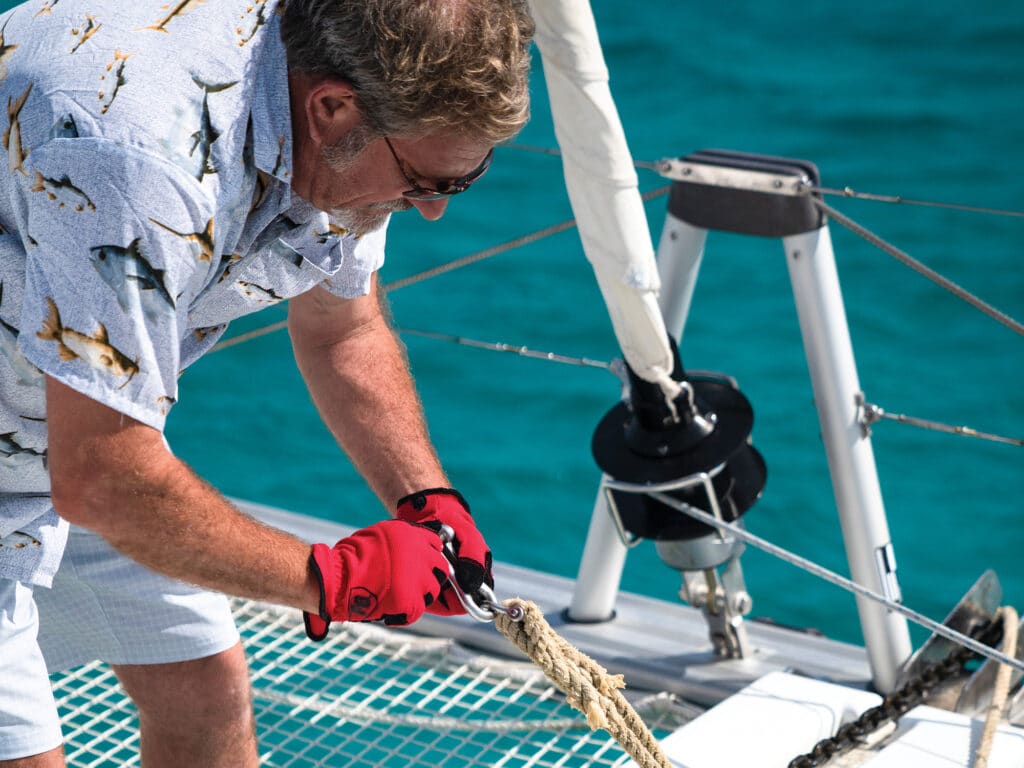
The second path, he says, is a weeklong destination school. “This is a full-immersion, intensive course where students do a fair amount of study before arriving,” he says. “Once they are there, they are in class and running maneuvers sunup to sundown. The skill-building happens on the water.”
Of the two paths, the sailor who studies locally over a longer period might build a broader base of knowledge, while the other might be looking for a deep dive into the aspects of chartering. “A student in a course stretched out over six weeks might learn more about sail trim and sail theory, whereas someone on board a boat 24 hours a day might learn more about seamanship, bilges, and troubleshooting the engine,” he says. “There are certain things that happen on the water when you’re living on a boat. You have the opportunity to learn problem-solving in the moment.”
For the ASA local courses, Basic Keelboat Sailing (ASA 101) teaches skills inside a marina. Basic Coastal Cruising (ASA 103) takes the student outside the marina, and up and down the coast. Bareboat Cruising (ASA 104) is required to charter a boat.
“You can learn to sail in Colorado on your weekends, or sign up for a charter yacht in Greece,” Payne says. “There are a lot of options.”
US Sailing, the governing body for the sport of sailing in the United States, offers similar building-block tracks: Basic Keelboat, Basic Cruising and Bareboat Cruising.
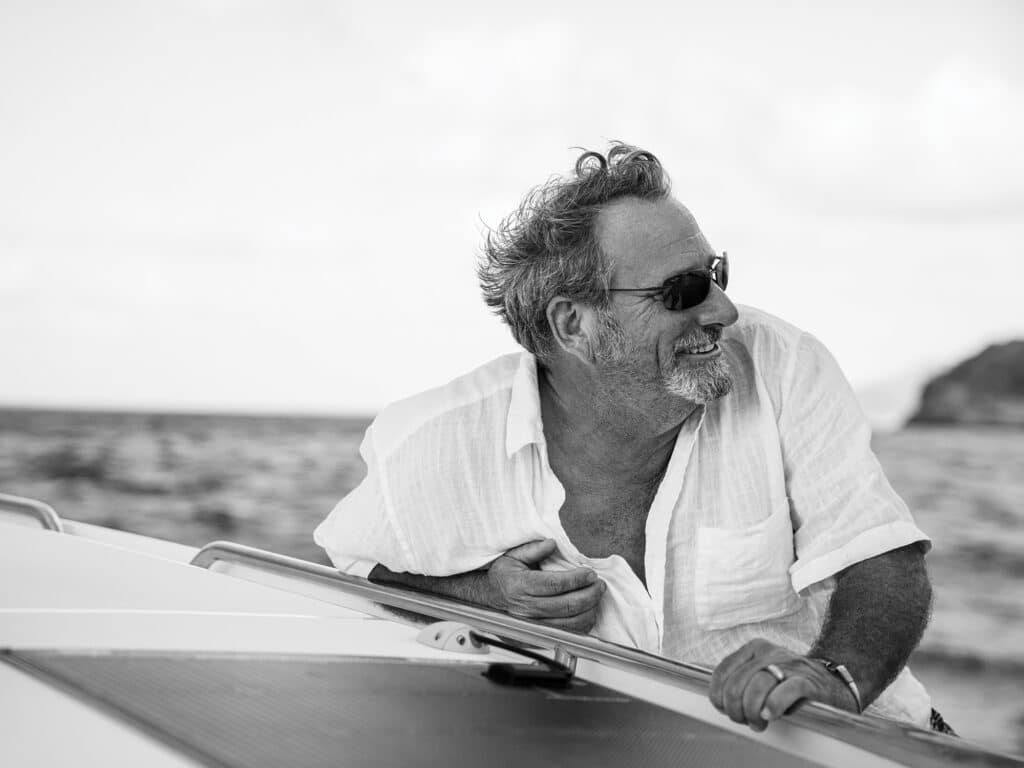
Doris and Steve Colgate, founders of US Sailing-certified Offshore Sailing School, come from a racing background and have more than 160,000 graduates in over 60 years of teaching. Offshore offers one-week training courses in Florida and the British Virgin Islands, where students earn certifications for boats up to 50 feet.
Students attend for a variety of reasons, according to Beth Oliver, vice president and director of sales and marketing. Some are new to sailing. Others are veteran sailors who want to experience the BVI. “These are people who either want to charter on their own, or who are considering purchasing a yacht and living aboard,” Oliver says. “They’re adventure-seekers with an active lifestyle, and want to share this enthusiasm with like-minded people. Many of our students are highly educated professionals, so continual learning is important to them. They like to share their skills with family and friends. Many want to pass on the sailing lifestyle to their children and grandchildren as a sort of legacy.”
For those who want to charter, Offshore offers a combination course: Fast Track to Cruising. “We like to say that we can take you from your couch to the captain’s chair in one week,” Oliver says. Textbooks are sent in advance, and students arrive at class prepared to learn.
Offshore is the official sailing school of The Moorings, one of the world’s largest charter companies. The Moorings offers Offshore Sailing School courses in the BVI and Royal Yachting Association courses in the Mediterranean, according to Amanda Kurland, charter sales representative for The Moorings and Sunsail. These sister companies offer several levels of courses in multiple places. Sunsail has destination sailing schools in the United Kingdom, Croatia, Greece, Australia and Grenada.
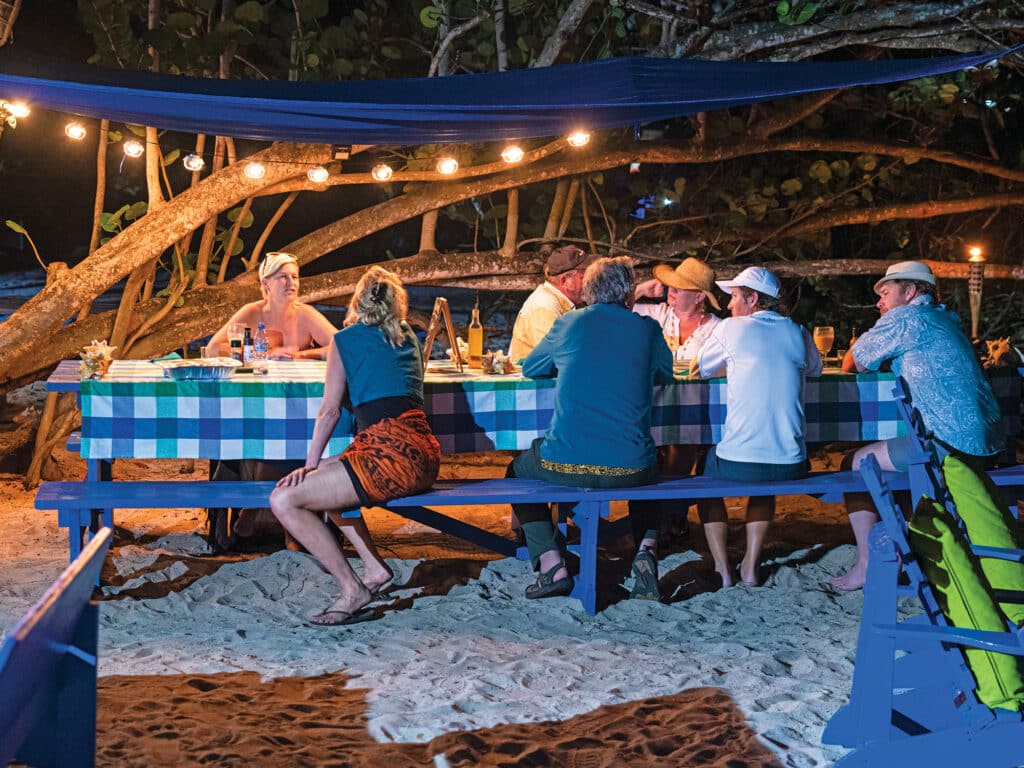
Some people do the training because they want to purchase their own boat when they retire, Kurland says. Others are jumping from lake sailing to ocean sailing. Still others have the goal to charter a bareboat.
Blue Water Sailing School, an ASA-certified school in Fort Lauderdale, Florida, offers destination sail training charters closer to home. These are seven-day liveaboard courses where the vessels anchor out at night. Classes are available in Florida, Rhode Island, the Virgin Islands and the Bahamas.
Blue Water owner David Pyle says that he also finds two basic groups of people looking for sail training: those who want to go cruising on their own boat someday and those who want to charter. “We try to get students to a point where they’re comfortable, confident and safe on a boat,” Pyle says. “It’s kind of like getting a pilot’s license to fly a small plane. You can get the training and certification, but of course you want to be safe and competent before you fly a plane on your own.”
Pyle says that approximately 15 to 20 percent of basic-level students return later for advanced courses. “We get a lot of people who have this goal to purchase their own boat,” he says. “They want to see if this is for them. I was just talking to a couple from Nebraska. They’ve never sailed, and they’re interested in finding out if this is for them. This is not uncommon.”
Pyle and Oliver agree that the most challenging aspect for students is often the amount of material they need to learn. Most students are also fairly anxious when it comes to docking. “Students who have been away from testing for a while might get nervous about the written-test component, but our instructors determine each student’s learning levels and preferences, and work with them individually, quizzing everyone each day on topics, so most are very comfortable by the time they take the written tests,” Oliver says.
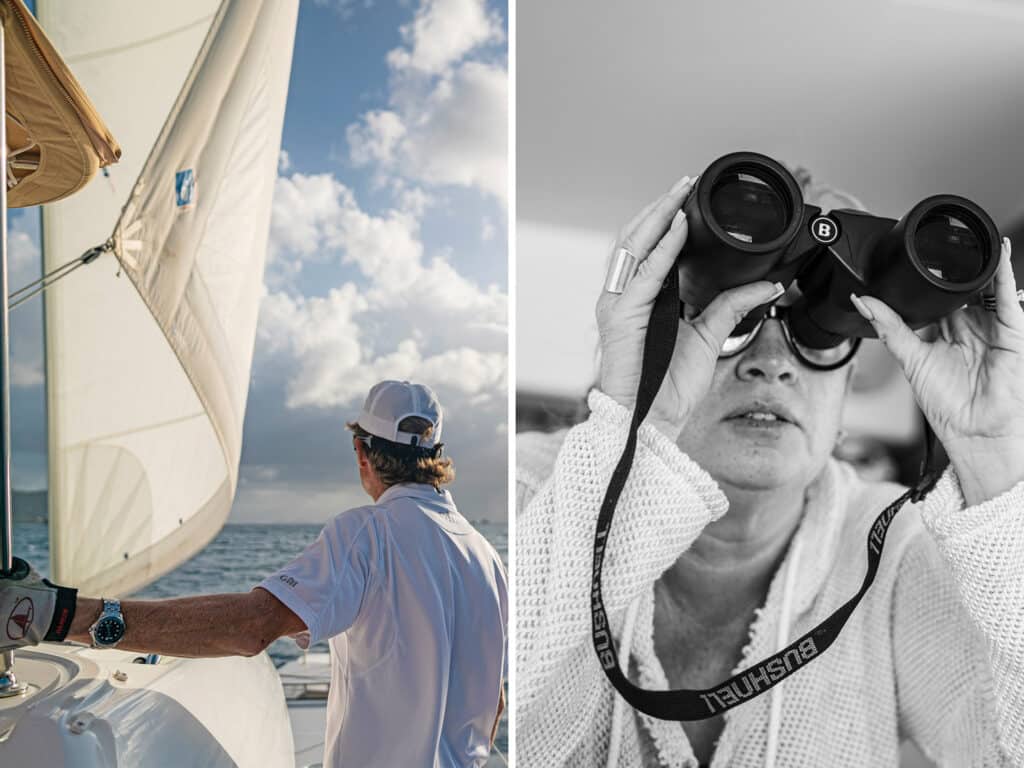
There’s a lot of repetition and refreshing as the course goes along. Some students fear that they lack the physical strength for sailing work, but the sailboats have equipment such as winches to assist the student with maneuvers. Other students have a general fear of the water and seasickness, but most of that can be overcome with time on the boat.
Pyle says that it’s not uncommon to work with sailors who have had smaller boats, such as a 25-foot boat on a lake, but now want to go coastal sailing on a 40-foot monohull or offshore sailing on a 50-foot catamaran.
West Coast Multihulls in San Diego runs a sailing school with training on multihulls. Students who complete AS 101, 103 and 104 can take ASA 114: Cruising Catamaran Certification. It’s a five-day liveaboard class offered around Catalina Island and in the Sea of Cortez.
“We are catamaran experts with the largest sailing catamaran fleet on the West Coast,” says Guinevere King, general manager at West Coast Multihulls. “People come to our school to learn how to sail catamarans and experience the liveaboard cruising lifestyle in Southern California and in the Sea of Cortez.”
Most students want to get ASA 114 certifications while building their sailing resumes so that they can bareboat charter. “We also have a large percentage of our students who are looking to buy a catamaran and cruise the world with family and friends.”
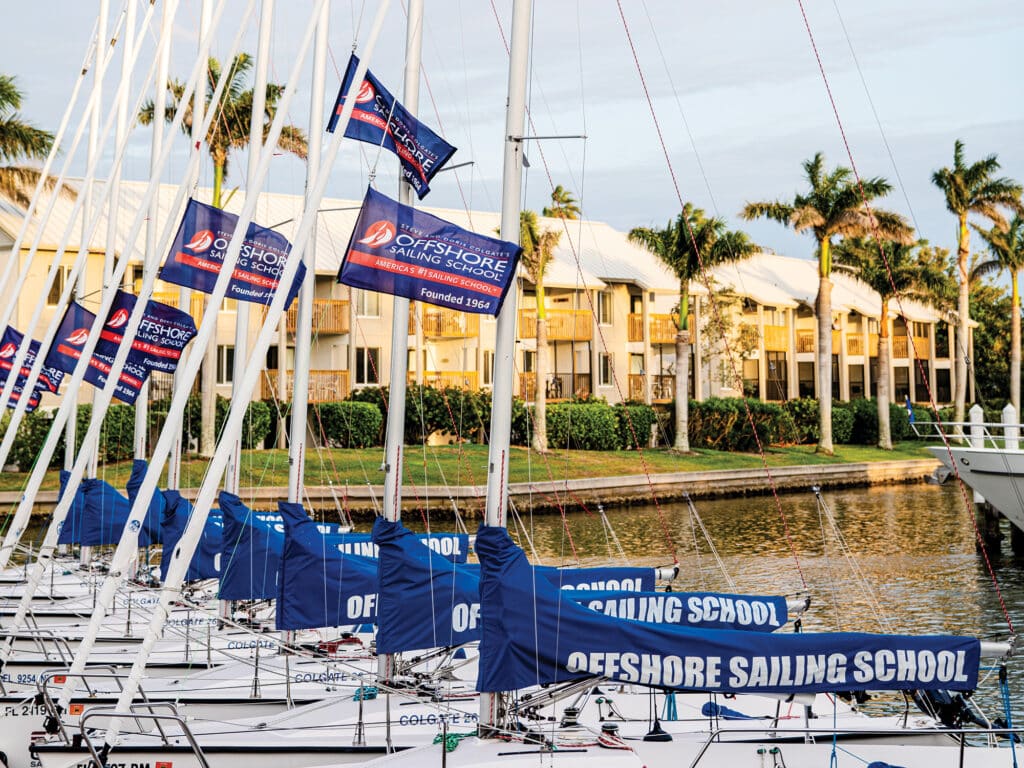
West Coast Multihulls also offers ASA 105 and 106 advanced courses for experienced sailors. The company recently added ASA 107 and 108, which cover celestial navigation and passagemaking.
“Our instructors share their knowledge and expertise with their students in a supportive environment,” Kurland says. “Our students gain confidence and invaluable real-world experience on board, which you can’t replicate by watching a YouTube video.”
Barefoot Offshore Sailing School instructor McClean says that because there are so many levels and types of courses available, he doesn’t see a typical student but rather a thread that links them all. It’s people who want to sail, who want to live on a boat and learn for a week, who want to go offshore.
“Fifteen percent of our students are new to sailing,” he says. “Forty to 50 percent have already taken an initial course and are there to advance their skills.” The school welcomes all levels, he says, “but we do encourage people to take that first level at home. Someone can get far more out of their investment if they can learn the basics of tacking and jibing before coming to the Grenadines. It’s an ideal location for learning. You’re exposed to 8- to 15-knot winds, waves offshore off the islands, and a guaranteed variety of good winds.”
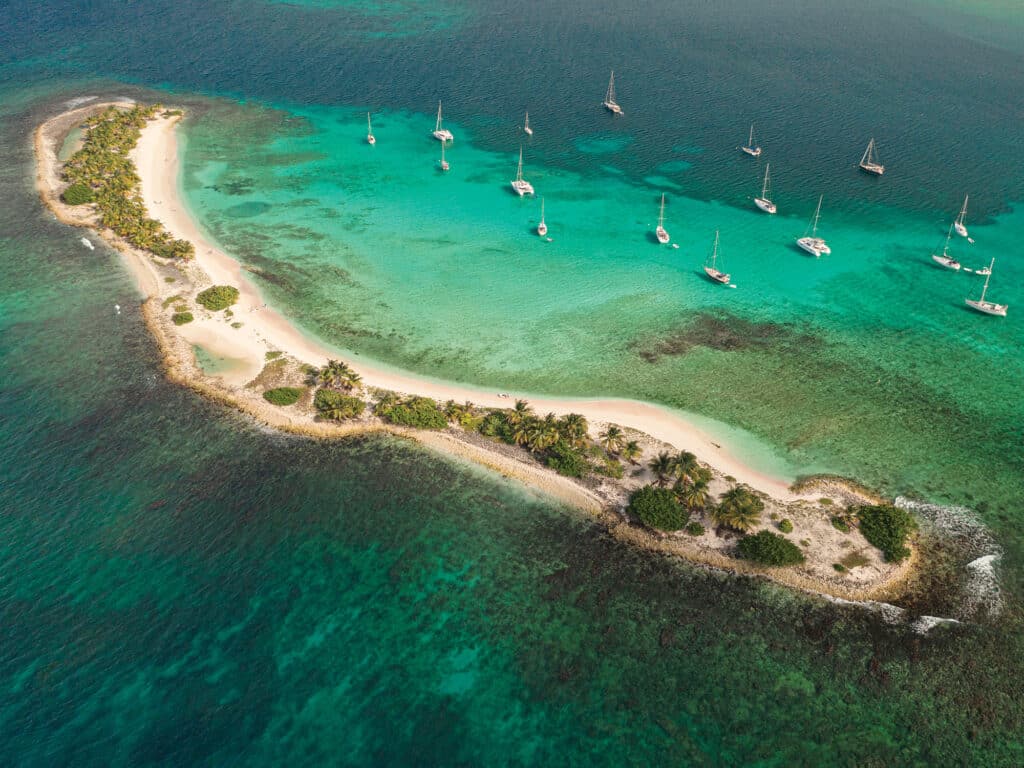
McClean says that the most important skill, in any context, is ensuring the safety of the crew and skipper. Other tough skills for students include navigating in unfamiliar waters, understanding weather, and anchoring at night. “Probably the most challenging [skill] we teach is crew-overboard drills,” he says, adding that students practice in multiple circumstances at multiple times. “If you’re not confident on all points of sail and you can’t manage a beam reach, then you need training and practice.”
After the introductory and intermediate courses, some students apply for advanced courses, including sailing at night. Some want to learn offshore sailing on a trans-Atlantic course. “We have a discussion with them to verify that this a good match for them,” McClean says. “The last thing they want is to wake up and find that this is the last place they want to be.”
Award-winning journalist Theresa Nicholson is CW’s senior editor.

